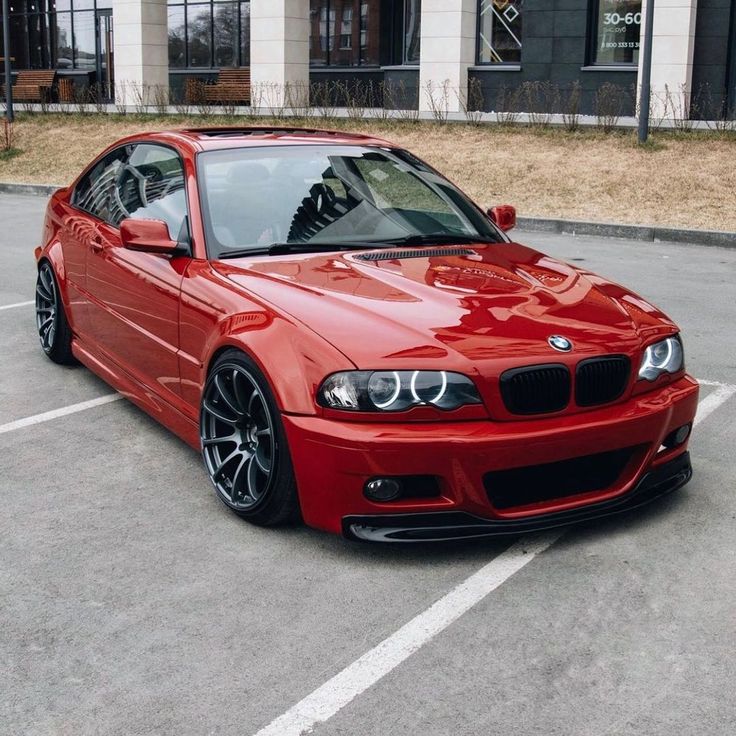The BMW E46 is the fourth generation of the BMW 3 Series, produced from 1997 to 2006. Widely regarded as one of the best BMWs ever made, the E46 combined the brand’s trademark sporty driving dynamics, luxury, and advanced technology in a package that appealed to a broad range of drivers. It remains one of the most iconic and beloved 3 Series models to this day. Below is everything you need to know about the BMW E46.
1. Overview of the BMW E46
The E46 was the successor to the highly successful E36 and was built on BMW’s reputation for creating sporty, luxury sedans and coupes. It was available in a variety of body styles, including:
- 2-door coupe (most popular among enthusiasts)
- 4-door sedan
- 5-door wagon (Touring)
- 2-door convertible
- M3 version (performance-focused)
The E46 brought a more modern and refined design compared to the E36, with a larger focus on safety features, comfort, and advanced technology. The E46 was designed to be a more luxurious and comfortable vehicle without sacrificing its sporty DNA.
2. Engine Options
The E46 offered a broad range of engines, from more economical 4-cylinder models to high-performance 6-cylinder versions. The engine lineup included:
Inline-4 Engines:
- BMW 318i: 1.9L, 143 hp (later models came with a 2.0L engine)
- BMW 320i: 2.0L, 150 hp
- BMW 323i: 2.5L, 170 hp
- BMW 325i: 2.5L, 184 hp (more popular model)
- BMW 330i: 3.0L, 225 hp (more powerful and sportier)
Inline-6 Engines:
- BMW 325i: 2.5L, 184 hp (more refined and luxurious)
- BMW 330i: 3.0L, 225 hp (a great balance of power and refinement)
Diesel Engines (Europe only):
- BMW 320d: 2.0L diesel, 150 hp
- BMW 330d: 3.0L diesel, 204 hp
BMW M3 (E46):

The M3 E46 was the high-performance version and one of the most beloved versions of the M3 in BMW history. The E46 M3 featured:
- 3.2L inline-6 engine (S54), producing 333 hp.
- 6-speed manual (standard) or SMG automated manual transmission.
- Performance-focused suspension and braking system for enhanced handling.
- Aggressive styling: The M3 had wider fenders, a more aggressive front bumper, quad exhaust pipes, and sportier features.
- Acceleration: The M3 E46 could reach 0-60 mph in about 5.0 seconds.
3. Performance and Handling
The E46 is widely regarded as having a near-perfect balance between comfort and sportiness. Thanks to BMW’s use of rear-wheel drive (RWD), the E46 offered excellent handling dynamics, responsive steering, and a very balanced chassis. Here’s how it stood out:
- Rear-wheel drive offered classic BMW driving characteristics, with a focus on fun and responsive driving.
- The E46 M3 was an iconic performer in the line, with a perfect mix of track-ready performance and daily driving usability. The M3 had a double-wishbone front suspension and multi-link rear suspension, providing precise handling and a smooth ride.
- For the regular versions like the 325i and 330i, the suspension was sporty yet comfortable enough for daily driving. The E46 offered a smoother ride compared to the E30 and E36 models, thanks to its updated suspension and refined interior.
4. Design & Features
The E46’s exterior design was clean and modern, with flowing lines and a more mature aesthetic compared to the boxy E30 and E36 models. The design struck a balance between sportiness and luxury.
- Front design: The E46 carried the classic BMW kidney grilles, a well-defined front bumper, and a sculpted hood that blended nicely with the rest of the body.
- Interior: The cabin featured an improved, more luxurious design compared to the E36. It included a clean dashboard, a simple, intuitive center console, and more comfortable seating materials. High-quality leather and wood trim were available on higher-end models.
- Advanced features: The E46 was equipped with more advanced technology for its time, including options for navigation, Bluetooth connectivity, automatic climate control, and premium audio systems.
- Convertible and Coupe models were especially popular due to their stylish looks and sporty driving experiences.
5. M3 (E46) – The Ultimate Performance Model
The BMW M3 E46 is often considered one of the best M3s ever produced. It had a perfect mix of performance, style, and driving dynamics. Key features of the M3 E46 include:
- S54 3.2L Inline-6 engine, producing 333 hp.
- Performance suspension: The M3’s suspension system was tuned for more aggressive handling, with adjustable shocks, a limited-slip rear differential, and larger anti-roll bars.
- Exterior styling: The M3 stood out with its wide fenders, quad exhausts, lower stance, and distinctive front and rear bumpers.
- Interior: The M3 offered sporty Recaro seats, a three-spoke M steering wheel, and a more driver-focused cabin.
- Performance figures: The M3 E46 could accelerate from 0-60 mph in 5.0 seconds and had a top speed of around 155 mph.
6. Technology & Features

The E46 was equipped with a wide range of features and technology, some of which were considered cutting-edge at the time:
- Traction control (ASC) and ABS were standard on most models, enhancing safety and stability.
- Electronic Stability Control (DSC) was available in higher trims.
- Automatic climate control, cruise control, and power-adjustable seats made it more comfortable for daily driving.
- Xenon headlights were available as an upgrade for improved visibility at night.
- On-board computer system displayed vehicle data such as fuel consumption, range, and maintenance information.
7. Reliability & Maintenance
The E46 is generally considered a reliable car, but like any older BMW, it can have some issues:
- Cooling system: The E46 is known for issues with the cooling system, especially in models with the M54 inline-6 engine. Problems with the water pump, thermostat, and radiator can occur, so regular maintenance in this area is crucial.
- Rear subframe issues: Similar to the E36, some E46 models, particularly earlier ones, are prone to subframe cracks. A thorough inspection is recommended if buying a used E46.
- Vanos system (variable valve timing): The VANOS system (BMW’s variable valve timing) can fail in high-mileage E46 models, leading to engine performance issues.
- Suspension wear: Suspension components, such as bushings, control arms, and struts, can wear out over time, especially on M3 models.
- Electrical issues: Some E46 models have experienced problems with window regulators, door locks, and lighting systems.
8. Collectability & Pricing
The E46 is still widely regarded as one of the best 3 Series ever produced, and as a result, its value has remained strong. Here’s a rough idea of pricing:
- BMW M3 E46: Prices for the M3 E46 range from $10,000 to $30,000+ depending on mileage, condition, and whether it’s a Manual or SMG model. The 2003-2006 M3 models with lower mileage and in excellent condition tend to fetch higher prices.
- Non-M3 E46: Prices for models like the 325i, 328i, and 330i generally range between $4,000 to $12,000. Well-maintained examples with lower mileage may go for more.
- E46 Touring (Wagon): The wagon models are becoming more desirable, especially if they’re in good condition, and they can fetch prices ranging from $6,000 to $12,000.
9. Legacy & Impact

The E46 was a massive success for BMW and is still one of the most beloved models in the 3 Series lineup. It offered a perfect balance between sportiness, luxury, and daily usability, making it a favorite among driving enthusiasts. The E46 also set the bar for the next generation of BMW vehicles, influencing the design and technology of future BMW models.
The E46 M3 remains a modern classic and is often seen as one of the best M3 variants produced, with many enthusiasts considering it the golden era of the M3.
Key Specs for the BMW E46 (1997-2006):
| Model | Engine Type | Power (hp) | 0-60 mph (sec) | Top Speed (mph) |
|---|---|---|---|---|
| BMW 318i | 1.9L Inline-4 | 143 hp | 9.5 | 130 |
| BMW 325i | 2.5L Inline-6 | 184 hp | 7.0 | 140 |
| BMW 330i | 3.0L Inline-6 | 225 hp | 6.0 | 150 |
| BMW M3 (E46) | 3.2L Inline-6 | 333 hp |

